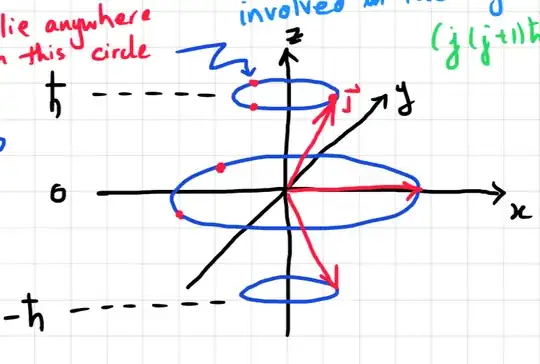$\newcommand{\ket}[1]{\left|#1\right>}$ Normally the matrix representation of $J_x$ and $J_y$ are derived using the ladder operators. But is a better intuition possible by starting with $J_z$ alone ? One just needs to find the eigenvectors of these operators in the basis of eigenvectors of $J_z$, but how do you do that ?
For $j$ = 1, the basis states are $\ket{j=1, m_z = +1}$, $\ket{j=1, m_z = 0}$ and $\ket{j=1, m_z = -1}$
if $\ket{j, m_y}$ are the eigenstates of $J_y$ then the basis just as above would be $\ket{j=1, m_y = +1}$, $\ket{j=1, m_y = 0}$ and $\ket{j=1, m_y = -1}$
To represent say $\ket{1, m_y = +1}$ in $J_z$ basis : $$\ket{1, m_y = +1} = \langle{1, m_z = +1}\ket{1, m_y = +1} \ket{1, m_z = +1} + ...$$ and so on for all the three $J_z$ eigenvectors
But how do you intuitively figure out those inner products. For $j = 1$, the momentum vector $\vec{J}$ in real space looks like this:
Then what is the intuition behind $\langle{1, m_z = +1}\ket{1, m_y = +1}$ ?
